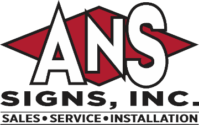In today’s competitive marketplace, effective signage plays a crucial role in attracting customers and establishing a strong brand presence. Choosing the right type of sign for your business is a decision that requires careful consideration. The sign you select should align with your brand identity, target audience, location, and budget. In this article, we will explore the key factors to consider when determining the right type of sign for your South Georgia or North Florida business.
1. Define Your Brand Identity:
Before selecting a sign, it’s essential to understand your brand identity. Consider your business’s mission, values, and the image you want to project to potential customers. Reflect on your target audience and the impression you want to create. Are you a modern and trendy establishment or a classic and sophisticated business? Understanding your brand identity will help you choose a sign that resonates with your desired image.
2. Assess Your Location and Regulations:
Your business’s location plays a vital role in determining the type of sign you can display. Check with local authorities to understand any zoning regulations or restrictions that may affect your signage options. Some areas may have specific guidelines on the size, color, or illumination of signs. Additionally, analyze the physical space available for signage and choose a type that fits within those constraints.
3. Consider Visibility and Readability:
A sign must be visible and readable to be effective. Assess the distance from which your sign needs to be seen and consider factors like surrounding buildings, traffic flow, and pedestrian activity. Choose a type of sign that stands out in its environment and ensures legibility both during the day and at night. Options such as illuminated signs, channel letters, or digital displays can enhance visibility in low-light conditions.
4. Determine the Sign’s Purpose:
Different signs serve various purposes, and understanding your objectives will guide your decision-making process. Are you aiming to attract new customers, improve brand recognition, or provide information? For instance, an eye-catching storefront sign can draw attention and entice potential customers, while directional signs inside your establishment can improve customer experience and navigation.
5. Budget Considerations:
Setting a budget for your signage project is essential to avoid overspending. Explore different sign types and materials, their associated costs, and the potential return on investment. Remember that quality signage is an investment in your business’s success, so strive for a balance between cost and long-term durability. Consult with signage professionals who can provide guidance on cost-effective options that meet your requirements.
6. Longevity and Maintenance:
When choosing a sign, consider its expected lifespan and maintenance requirements. Outdoor signs must withstand various weather conditions, while indoor signs may need to be updated more frequently. Durability, ease of maintenance, and the ability to adapt to changing needs should all be factored into your decision.
7. Seek Professional Advice:
Navigating the world of signage can be complex, especially if you’re unfamiliar with the industry. Seek guidance from professional sign companies or graphic designers who specialize in signage. They can offer expert advice on the best sign types, materials, and design elements to represent your brand effectively.
Conclusion:
Selecting the right type of sign for your business is a crucial step in building a strong brand presence and attracting customers. By defining your brand identity, considering your location and regulations, prioritizing visibility and readability, determining the sign’s purpose, accounting for your budget, and seeking professional advice, you can make an informed decision. Remember, a well-designed and strategically placed sign can be a powerful marketing tool that leaves a lasting impression on your target audience.






